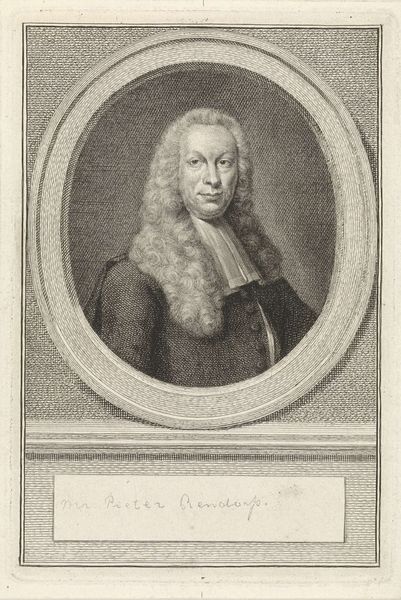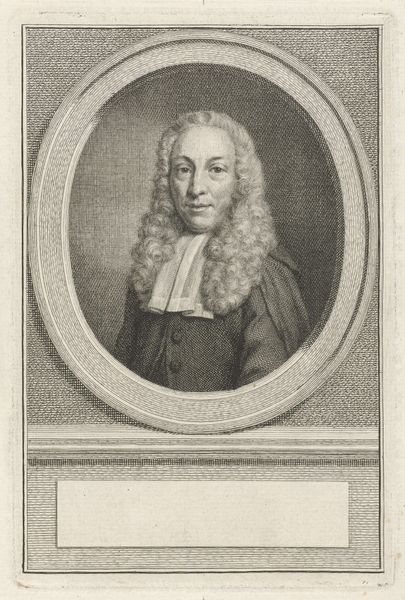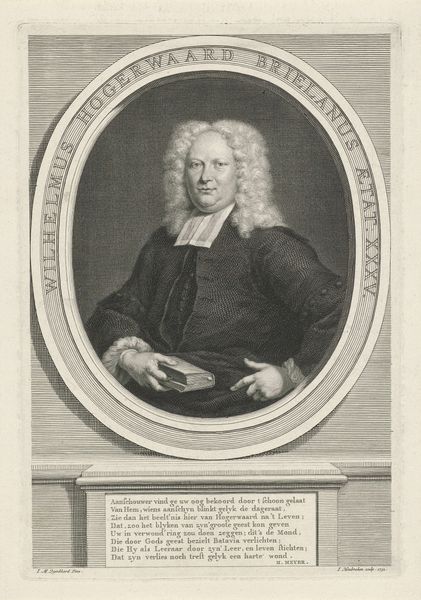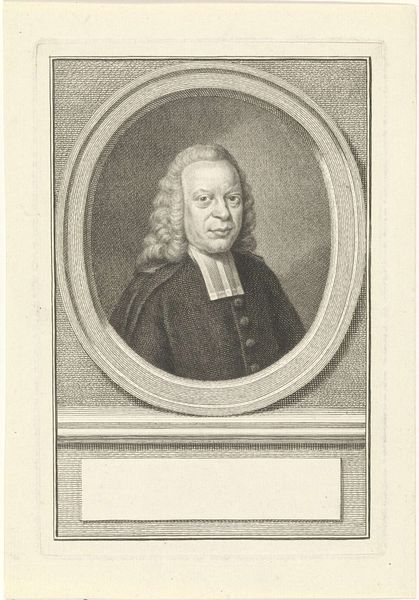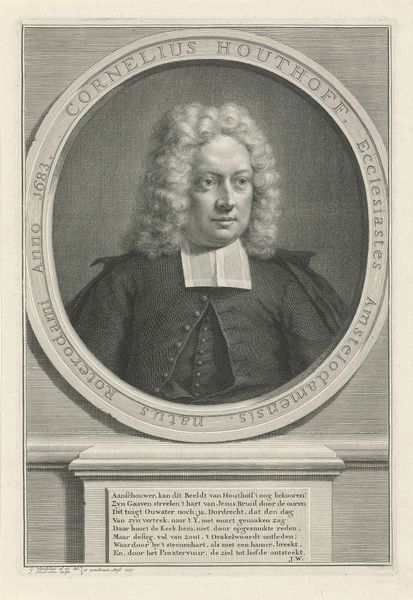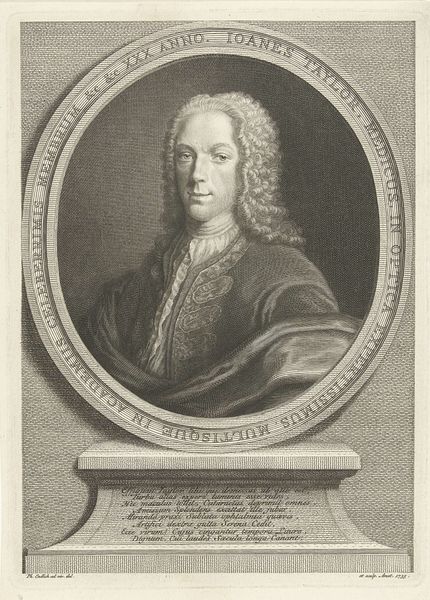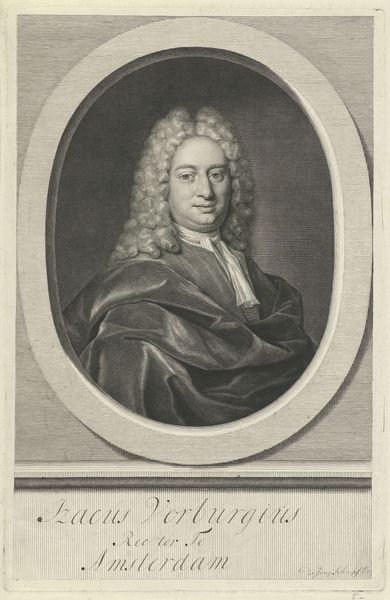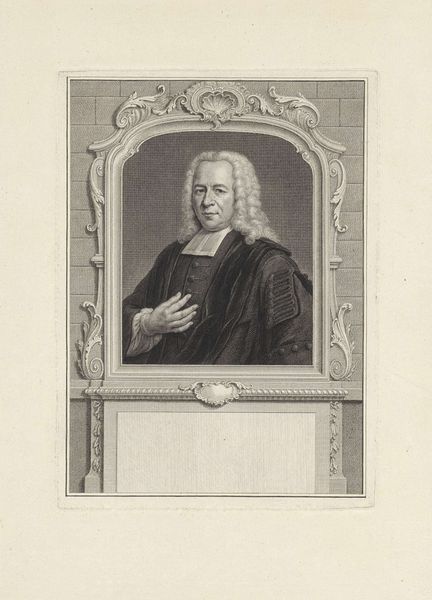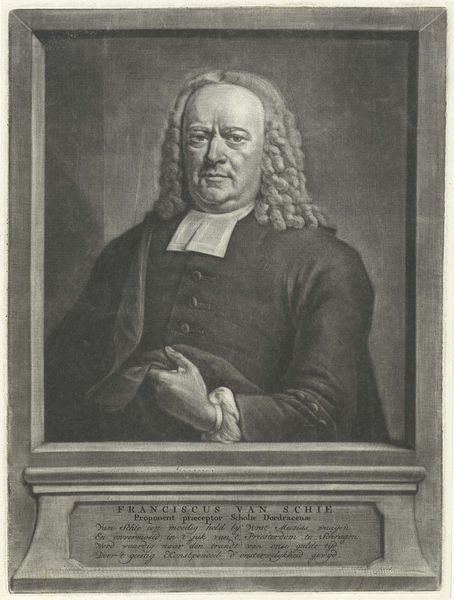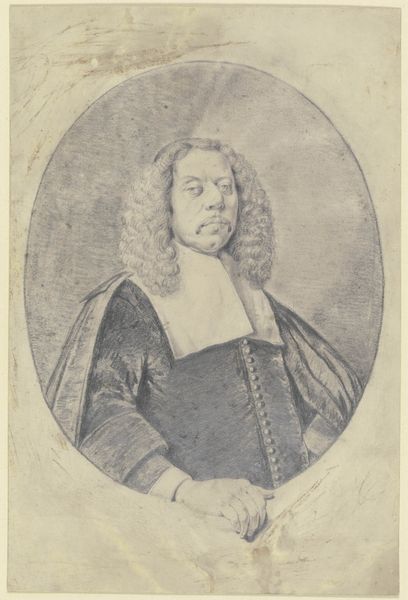
engraving
#
portrait
#
baroque
#
charcoal drawing
#
historical photography
#
line
#
portrait drawing
#
history-painting
#
engraving
Dimensions: height 316 mm, width 219 mm
Copyright: Rijks Museum: Open Domain
Curator: Here we have "Portret van Johan Gosewijn Eberhard Alstein," an engraving created sometime between 1731 and 1748, currently held in the Rijksmuseum. Editor: The first thing that strikes me is the oval frame—it feels like looking through a window into another era. Curator: Indeed. Notice the incredibly fine lines achieved through engraving. The artist, Philippus Endlich, uses this to create subtle gradations of tone, almost like a charcoal drawing, capturing the textures of fabric and the intricacies of his wig. Editor: That gesture—the open hand—it’s an age-old symbol of accessibility, openness, almost an invitation. But to what, precisely? It’s weighted by that solemn black attire. Curator: It is quite interesting how the figure dominates the oval. Structurally, the composition balances the ornate frame with the relative simplicity of Alstein's pose and garments. There's a distinct clarity in the articulation of form, a classical precision within the Baroque era. Editor: Yet even that austere black hints at status and piety. His white collar speaks volumes too, a symbol of his calling as a pastor. The artist really utilizes conventions for cultural resonance. The very whiteness feels like moral virtue made visible. Curator: Consider the geometric precision in the rendering of the frame itself. The double lines, the subtle shadowing—they serve to emphasize the two-dimensional nature of the work. And it simultaneously works to further enhance the realism within the oval. A sophisticated interplay! Editor: He's suspended in a cultural moment. A man of learning and faith, framed for posterity. The details encode not just who he was, but how his contemporaries wanted to be remembered. It’s about creating lasting cultural significance. Curator: Thinking about the use of line, and its overall structure, I find this work reveals to us much of 18th century representational art. Editor: A moment arrested in time and yet echoing across centuries. I will never tire of interpreting portraits; each a repository of bygone dreams and long-forgotten values.
Comments
No comments
Be the first to comment and join the conversation on the ultimate creative platform.
